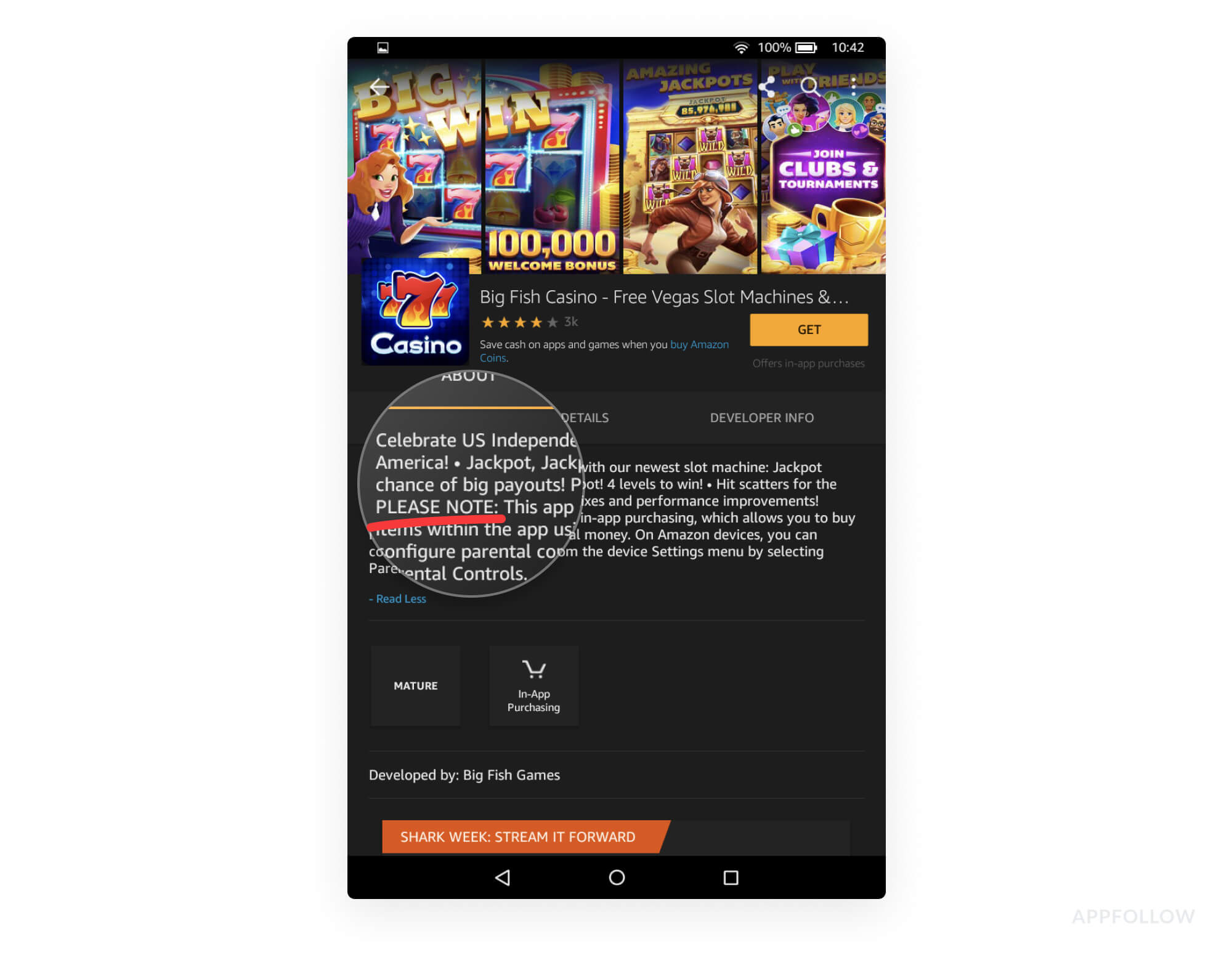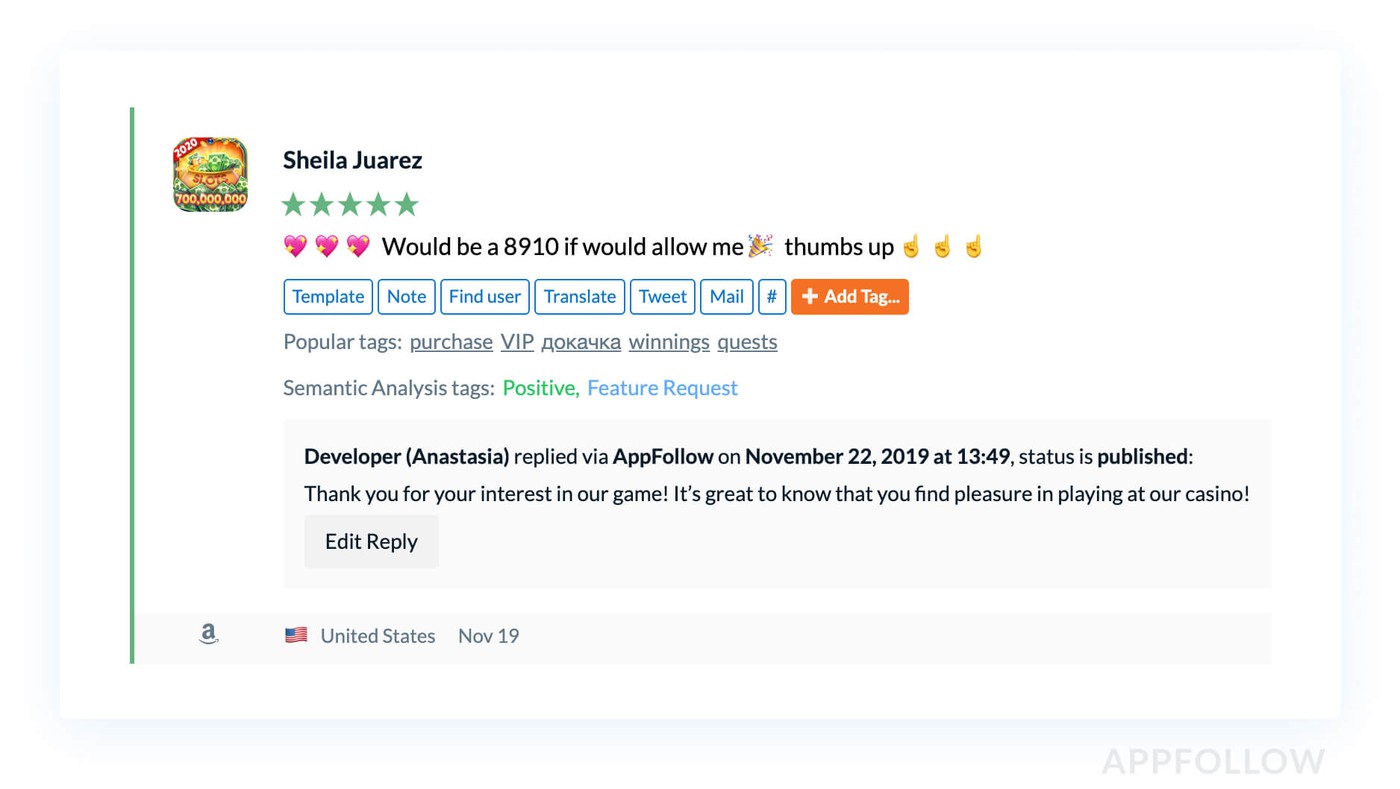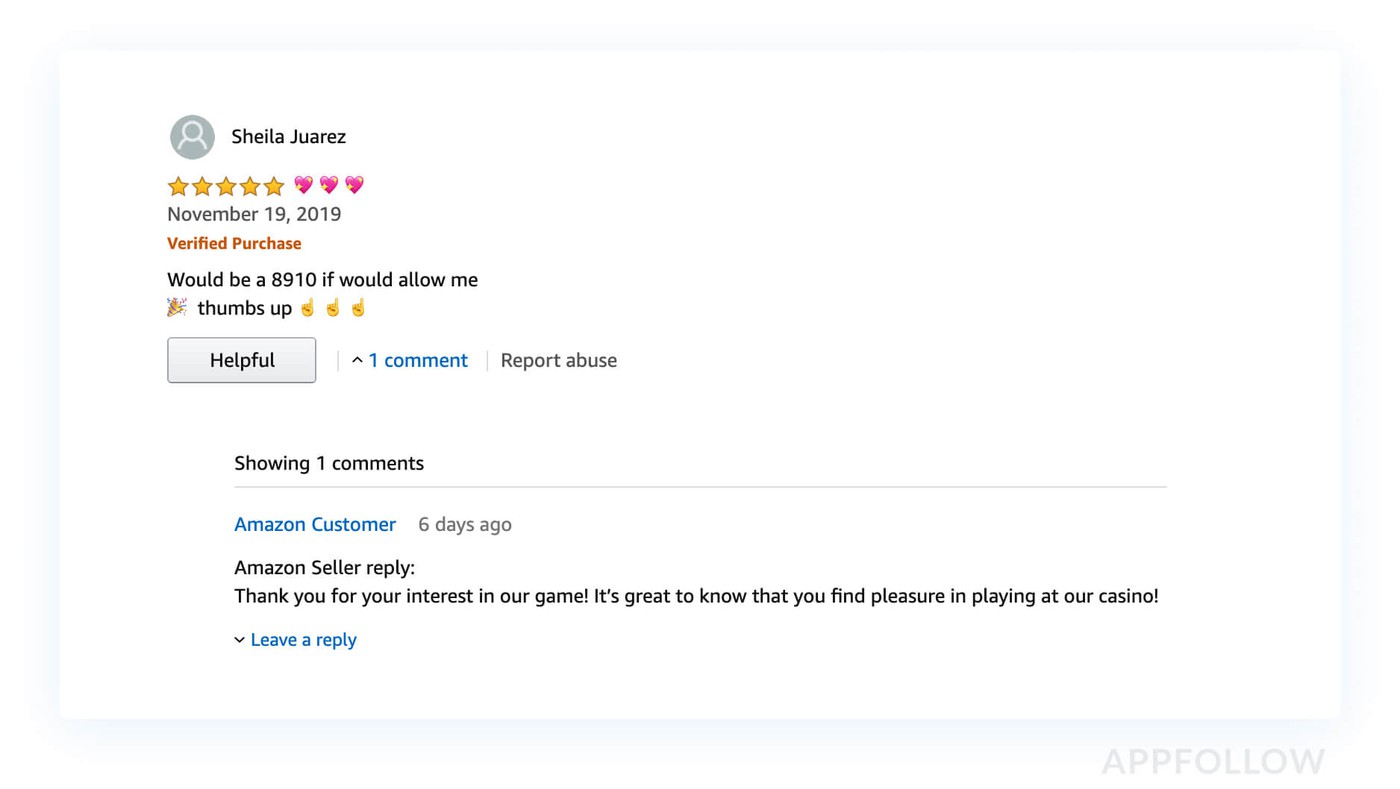How to do ASO for Amazon Appstore

Table of Content:
Amazon Appstore is a high-potential app store outside of the Big Two: Google Play and Apple App Store. Vladimir Romanov from Heapp Games jumped into this platform head-first and managed to get his game in the Top 20. In this article, Vladimir shares his findings for promoting apps on this store.
The experiments he describes below were done on a Kindle Fire.
I first learned about Amazon Appstore in June 2018 when I was an ASO newbie. I was tasked with increasing traffic to a mobile casino in various app stores, including this one. At first, I didn't really get it. How do you do app store optimization without any tools? There are tons of articles online about ASO for Google Play and App Store, but almost nothing about Amazon App market. Their official help section doesn't offer up any specifics, either. It only suggests recommendations on describing the product in as interesting a way as possible to attract users. So, I dug in and started trying things manually.
For 10 months my app was consistently in the Top 20 in the Games category. It reached #600 overall for free apps and games in the United States.

Why Publish an App on Amazon Mobile Appstore
Amazon Appstore stands out from other Android app stores because it's the only way to promote apps for Kindle Fire devices. For comparison, the app store for South Korean giant Samsung Galaxy only offers apps for its own devices and competes with Google's Play Market. It's not hard to guess who gets all the glory. On top of that, Kindle Fire tablets have the potential to grow a new audience. They run on Android OS, and adapting an app for this line of devices is easier than it seems. Having the app store for its own product line puts the company on par with Apple. And as we worked on ASO, we noticed that the two have a lot in common.
signup_boosting
Getting started on ASO for Amazon Apps
The first problem I faced was a pretty basic one: there was nowhere to see keyword positions. I couldn't find any detailed help guides, so I threw together a Google Docs spreadsheet and started measuring keyword positions myself:

I assumed that Amazon uses more or less the same search algorithms that it has for its main search engine for goods. After all, the web version of the Appstore is listed as one of the categories on Amazon.com, in the same position as categories like "Books & Comics" and "Shopping". This theory didn't pan out. As I manually selected keywords, it became clear that physical goods can be searched for with short descriptions taken out of context, but that's not the case for apps. That was a pretty interesting find.
So, in the end, it turned out that indexed app searches are based on three main fields:
- Title (200 characters)
- Keywords (30 words divided by commas without a character limit)
- Developer Name (about 50 characters)
In addition to these, there are also non-indexed text fields:
- Short Description (1200 characters)
- Product (Long) Description (4000 characters)
- Product Features bullets (maximum 10 lines)
- "Latest Updates" is similar to "What’s New", and it's filled out separately for each localization (maximum of 4000 characters).
App Title
The title actually fits 200 characters (it used to be 250), but only 40-70 of them will be visible on the device, depending on the device's orientation. You can only see all the characters in the web version.

Keywords
The Appstore doesn't count the number of characters in keywords, so it's best to put the longest words here (like "geolocation", for example). In addition to that, Amazon is pretty lenient when it comes to including competitors' brands in the Keywords field. In a year and a half, we haven't received any warnings from moderators (competitor brands were added before I even joined the company).
Repeating keywords doesn't seem to play a role either. That means that your job is to compile various combinations of keywords derived from the title and other fields. Amazon's moderation is lenient, so don't be afraid to use words like "Free", "Best", and so on. the plural form sometimes gets picked up by a search engine and it doesn’t, so for best results, use different forms.
Developer Name
Don't hang all your hopes on the developer name because you can't change it whenever you want. If you already have a developer account, you can't change the developer name anymore. You'll have to iron out all the details before creating an account.
Non-Indexed Fields
The web version shows the Title, Product Description, Product Features, and Latest Updates. Devices only show the Title, Short Description, and Latest Updates.
Amazon automatically adds a disclaimer to the Short Description about in-app purchases, which doesn't look too pretty. Formatting and creating new lines using the Enter key don't work here — the store cuts everything to make one continuous text block.

You can describe the app or game's features in a separate list. Each feature needs to be placed on a separate line, with a maximum of 10 lines. They're displayed as a bulleted list on the website.
Localization
Appstore supports 10 locales that run parallel to the company’s sites: amazon.com (USA), amazon.it, amazon.fr, etc. Here are all the languages supported: English (USA, Australia, United Kingdom, India), Italian, German, French, Spanish, Japanese, and Portuguese.
The en-US locale is used by default in all countries if the country doesn't have its own locale. Among the English-language locales, there's en-US, as well as Australia and the UK. Canada kind of got cheated: Amazon suggests French to be used instead of English. I preferred not to use this option.
When adding a localization, it links to the corresponding website. App ratings on each of the websites will correspond to that locale. It's strange that a breakdown of ratings by category isn't available everywhere.
Graphics
The Appstore has its own particular approach to graphics, so this requires some attention. It matters whether a user has their tablet in landscape or portrait orientation. Content varies based on the device's orientation when searching, navigating, or viewing the app page.
Search Page
Search results for the portrait orientation display a combination of the banner/screenshots and icon, while the landscape orientation only shows the icon. The banner is always first — to see the screenshots you need to scroll past it.

The banner is the same resolution as it is for Google Play — 1024х500. The lower part of the screenshots is blurred out, so any text placed really far down won't be visible. You can see in the examples that the banners are higher than the scroll bar, while the screenshots come in underneath it.

App Page
App page graphics are pretty standard. You have the icon, screenshots, and you can add videos. That said, Kindle Fires play by their own rules.
Icon
Amazon is the only app store that allows an alpha channel to be used on icons, so you can make rounded corners on your own. You'll also have to bear in mind that the store doesn't apply any masks. There is a nuance, however. Even if the alpha channel displays correctly in the search field, it turns black when you go to the page!

Screenshots
The top part of the screenshots is darkened, while the screenshot itself is positioned at the top of the screen. It's very likely that this will be the first thing the user sees. Say what you will, but landscape orientation seems to be the best solution for all scenarios.

All the artwork we used for Google Play worked for Amazon, too, with minor adjustments for the special features I previously mentioned. It's also worth noting that there are limited resolutions available. Personally, I used 1920х1080 screenshots.
Videos
If you add a video, it'll only appear when you go to the app page. Unfortunately, there's no way to make any preview banners for it. That's why it looks like a big black hole. Think long and hard before adding a video. It doesn't really feel like too many players are interested in videos. But this has to be put to the test.

Ratings and Reviews
The average app rating in Amazon appears just like in any other app store: you can see it in the search and on the app page. It's an important part of your strategy since reviews directly affect your app install rate.

There is no way to embed in-app rating request here and it's quite difficult to affect them right now. Starting November, we use AppFollow to answer reviews in the Amazon Appstore. We respond directly from AppFollow account and aim to increase user loyalty.


Traffic Channels
Amazon Appstore offers top charts, recommendations, and search results. Overall Free and Grossing are united for games and apps. There are also top charts by categories. Your app can make it to Recommended and Featured Apps.
Search
I can't say anything specific about search positions based on keywords, but they increase over time. It seems like the search engine breaks down complex keywords into simple ones and shows generalized search results for each word. For example, I realized right off the bat that we were positioned pretty well for the keyword "offline" as we ranked quite high on every word from meta I added to it. Our position improved over time for other keywords, too. Maybe it's because there's some kind of connection between all kinds of aggregated metrics or maybe we just have a great reputation.
You'll show up in search results for specific search terms only. Here's an example. Let's say that your competitor is Slonopotam. You add this name to your keywords. When searching for this keyword, Slonopotam is #1, and you're #10. But, if you have the word "offline" in your keyword field, and your competitor doesn't, then you'll end up in the top spot when searching for "Slonopotam Offline", while Slonopotam won't be there at all, just because they didn't include the term in their keywords. This rule proved true for more complex examples, too. Missing one word can completely shut you out of search results, so be sure to include various keywords when creating your semantic core.
Here's one more example of how one word can influence search results. Below, we show the search results for "slotomania casino games free bonus coins las vegas":

...and if we add the word "pokies", we suddenly see Jackpot Party pops into the second place, even though it was #6 in the previous search.

In other words, Jackpot Party has a stronger presence with the word "pokies" than New Slots 2019 does.
Top Charts
Your device only shows the first 20 apps in a category. Just 20 apps in each category...that's it. I really don't know why Amazon made that decision, but it is what it is. That said, search results by keywords are unlimited. So being in the Top 20 isn't just good...it's great!
The examples below show the search results for Top Free apps in the Casino category. Notice that one spot is left blank in landscape orientation.

Similar Apps
Amazon Appstore also has a section called "Recommended for You", the equivalent of Google's "Similar Apps". Just like with Google, it's not really clear how it works. The Developer Info section shows other products by the same developer.

Featured Apps
We didn't see any collection similar to “Editors` Choice” or “New Games We Love”. You can see what featured apps in categories look like in the example with House of Fun below. The categories also have many subcategories with recommendations (Recommended for You).

In theory, getting featured is pretty simple. The official FAQ says that you should write to the marketing department if you want to be featured. To do that, you need to have a developer account. Send an email to Amazon support saying, "I want my app featured. How do I do that?" You receive a response saying that your request has been forwarded to the marketing department for review.
I do know of one case when an app added the voice assistant Alexa. Amazon's marketing department reached out to the developer on its own, offering to feature the app. The developer was from Germany, so his app was featured on German Amazon. Ever since then, he's been #15 in Top Free Apps. Not bad!
This example supports the notion that Amazon is just as selective as Apple. Both companies love their own technologies, presentations, etc. This is still just a working theory that I'll put to the test in my next project when I'll send them a presentation and detailed explanation of the project. We'll see how that turns out.
Conclusion
You don't always have to limit yourself to well-known traffic channels if users exist on less popular ones. Amazon App Store has traffic and not too much competition yet. You can steer this traffic in your direction with a strong ASO strategy. The hardest part of working with this app store is its lack of full-fledged ASO tools and ways to track your keyword positions.
AppFollow has a solution for that. It lets you track versions, reviews, and ratings for any apps and products. If you want to start marketing on Amazon, shoot us an email.








